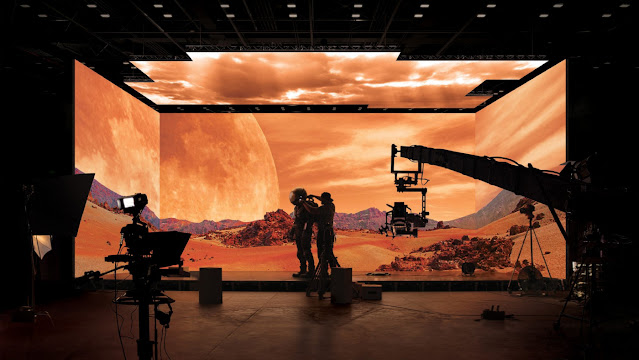In the realm of filmmaking, the term "virtual production" has become synonymous with innovation and creative freedom. This cutting-edge technology has reshaped the way movies are made, offering filmmakers the power to craft immersive and visually stunning cinematic experiences. In this article, we will explore how virtual production techniques are revolutionizing the film industry, ushering in a new era of storytelling and visual spectacle.
Virtual production is not an entirely new concept, but recent advancements have propelled it into the spotlight. Traditionally, filmmakers relied heavily on practical sets, green screens, and extensive post-production work to bring their visions to life. However, this approach had limitations in terms of creativity, budget, and time.
Today, virtual production harnesses real-time computer-generated imagery (CGI), augmented reality (AR), and virtual reality (VR) technologies to create dynamic and interactive environments on set. It enables filmmakers to visualize and manipulate digital elements in real time, providing immediate feedback and unprecedented creative control.
Applications in Modern Filmmaking
- Enhanced World Building: Virtual production empowers filmmakers to construct intricate and fantastical worlds with ease. From the lush jungles of Pandora in "Avatar" to the futuristic cityscapes of "Blade Runner 2049," this technology has made it possible to bring elaborate and immersive settings to life.
- Realistic Visual Effects: The line between practical effects and CGI has blurred, resulting in more realistic and jaw-dropping visual effects. Creatures, explosions, and other fantastical elements seamlessly blend with live-action footage, enhancing the viewer's suspension of disbelief.
- Efficiency and Cost Savings: By reducing the need for extensive post-production work, virtual production streamlines the filmmaking process. Directors can make real-time adjustments, saving time and budget. This efficiency has made virtual production an attractive option for both blockbusters and indie filmmakers.
- Innovative Filmmaking Techniques: Virtual production has given rise to innovative filmmaking techniques, such as LED walls and projection mapping. These technologies allow for natural lighting and reflections on actors, adding an extra layer of realism to scenes.
- Interactive Performances: Actors can now interact with digital elements on set, responding to them in real time. This dynamic interaction enhances performances and fosters a more immersive experience for both the actors and the audience

While virtual production holds immense promise, it is not without challenges. The initial investment in technology and the need for skilled technicians can be daunting. Ensuring seamless integration between digital and physical elements requires meticulous planning and execution.
Looking ahead, virtual production is expected to continue evolving. As technology becomes more accessible and user-friendly, it will likely become a standard tool in the filmmaker's arsenal. Real-time ray tracing improved AI-driven characters, and even more sophisticated virtual sets are on the horizon, promising to push the boundaries of storytelling and visual artistry.
- Virtual production has undeniably transformed the landscape of modern filmmaking. It empowers filmmakers to dream bigger, create more immersive worlds, and tell stories in ways previously thought impossible. As audiences demand increasingly immersive and visually stunning cinematic experiences, virtual production will play an integral role in shaping the future of cinema. Filmmaking is no longer confined to the boundaries of reality; it has entered a realm where creativity knows no limits, and the magic on screen is limited only by one's imagination



